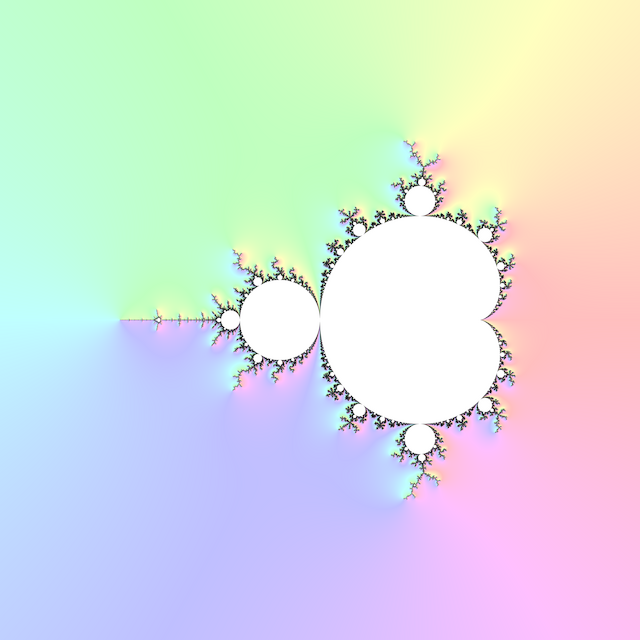# Dwell Gradient

\[\begin{aligned} v &= \left(\begin{matrix}\mu - \mu_x \\ \mu - \mu_y \\ s\end{matrix}\right) \\ g &= \frac{v_3}{\left|v\right|} \end{aligned}\]
where \(\mu_x\) and \(\mu_y\) are the continuous dwells of neighbouring pixels to the above and left of the pixel under consideration, and \(s > 0\) is a parameter that controls the strength of the effect. \(0 \le g \le 1\) colours the boundary of the set where iteration count goes up increasingly quickly. Define \(\mu\) to be large and negative for pixels that didn’t escape.
Faking distance estimate colouring (2014) also describes using \(\tan^{-1} \frac{v_2}{v_1}\) as hue for a rainbow colouring of dwell slope.
# 1 C99 Code
#include <complex.h>
#include <math.h>
const double pi = 3.141592653589793;
double _Complex m_dwell_gradient
(int N, double R, double s, double d, double _Complex c)
{
double m = m_continuous_dwell(N, R, c);
double mx = m_continuous_dwell(N, R, c + d);
double my = m_continuous_dwell(N, R, c + d * I);
double vx = m - mx;
double vy = m - my;
double vz = s;
double vm = sqrt(vx * vx + vy * vy + vz * vz);
return vz / vm;
}